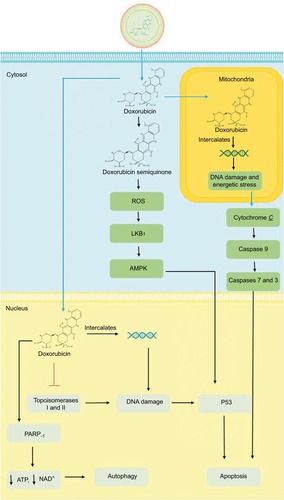Figures & data
Figure 1 Mechanism of action of DOX and L-DOX.
Abbreviations: DOX, doxorubicin; L-DOX, liposomal DOX; PARP, poly ADP ribose polymerase; ROS, reactive oxygen species.

Figure 2 PEGylated liposomal DOX (Doxil®).
Abbreviation: DOX, doxorubicin.

Table 1 Pharmacokinetic properties of DOX and L-DOX
Table 2 Comparison of use, efficacy, and safety profiles of DOX and L-DOX
Table 3 Clinical trials with L-DOX in combination with other chemotherapeutics in breast cancer
